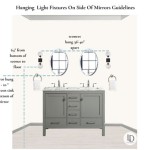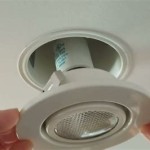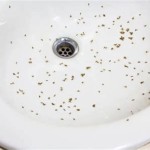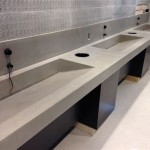Do Bathrooms Need A Vent Pipe? Understanding Plumbing Ventilation
The question of whether bathrooms need vent pipes is not simply a matter of preference, but a fundamental aspect of plumbing system functionality and building codes. Vent pipes, often inconspicuous components of a home's architecture, play a crucial role in maintaining proper drainage, preventing sewer gas intrusion, and ensuring the longevity of plumbing fixtures. Understanding the purpose of these pipes and the necessity of their presence is essential for homeowners, builders, and anyone involved in plumbing maintenance.
A plumbing vent system is a network of pipes that allows air to enter the drainage system. This seemingly simple function has profound implications for the overall health and efficiency of the plumbing. Without proper ventilation, a variety of problems can arise, ranging from slow drains and gurgling noises to the release of hazardous sewer gases into the living space. These gases, including methane and hydrogen sulfide, are not only unpleasant to smell but also pose potential health risks. Therefore, the presence and proper functioning of vent pipes are critical for a safe and comfortable living environment.
The core purpose of a vent pipe is to regulate air pressure within the drainage system. When water flows down a drainpipe, it creates a vacuum behind it. Without a vent, this vacuum would impede the flow of water, leading to slow drainage or even complete blockage. The vent pipe allows air to enter the pipe behind the water, equalizing the pressure and allowing the water to flow freely. This principle is similar to poking a hole in the top of a juice box to allow the liquid to pour out smoothly. In the plumbing system, the vent pipe serves as that "hole", ensuring efficient and unimpeded drainage.
Furthermore, vent pipes prevent the siphoning of water from toilet bowls and other fixture traps. These traps are designed to hold a small amount of water, which acts as a barrier against sewer gases. If the pressure within the drainage system becomes too low, it can siphon this water out of the trap, leaving the fixture vulnerable to sewer gas intrusion. The vent pipe prevents this siphoning action by maintaining a consistent air pressure throughout the system, thus preserving the integrity of the water trap and preventing the escape of noxious gases.
Different types of venting systems exist, each suited to specific building designs and plumbing configurations. The most common type is the vertical vent, which extends from the drainpipe up through the roof. This allows for direct communication with the outside atmosphere and effectively equalizes pressure within the system. Another type is the wet vent, which utilizes a drainpipe for both drainage and venting purposes. While wet venting can be a space-saving solution, it requires careful design to ensure proper functionality and compliance with building codes. Air admittance valves (AAVs) are another option, often used in situations where traditional venting is impractical. These valves allow air to enter the drainpipe when needed to equalize pressure, but prevent sewer gases from escaping. It is important to note that the use of AAVs may be restricted by local building codes.
Building codes universally mandate the installation of vent pipes in bathrooms and other plumbing fixtures. These codes are in place to protect public health and safety by ensuring proper drainage and preventing sewer gas intrusion. Failure to comply with these codes can result in fines, legal repercussions, and, more importantly, potential health risks for building occupants. The specific requirements for venting can vary depending on the jurisdiction, but the fundamental principle remains the same: adequate ventilation is essential for a safe and functional plumbing system.
Key Point 1: Pressure Equalization for Efficient Drainage
The primary function of a bathroom vent pipe revolves around pressure equalization within the drainage system. When a toilet is flushed or a sink is drained, a surge of water flows through the drainpipe. This flow creates a vacuum behind it, potentially hindering the smooth passage of water. The vent pipe provides an avenue for air to enter the system, effectively breaking the vacuum and allowing wastewater to flow freely and efficiently. Without this pressure equalization, drainage would be significantly slower and more prone to blockages.
Consider a scenario where a bathroom sink is not properly vented. As water drains from the sink, the vacuum created behind the water column would create suction, drawing water slowly and erratically. This slow drainage can lead to the accumulation of soap scum and debris within the drainpipe, further exacerbating the problem. Eventually, the drain may become completely clogged, requiring costly and inconvenient repairs. A properly functioning vent pipe eliminates this risk by ensuring a consistent and unobstructed flow of wastewater.
Furthermore, pressure fluctuations within the drainage system can affect the performance of other plumbing fixtures. If a toilet is flushed in a poorly vented system, the sudden surge of water can create a pressure imbalance that affects other fixtures, such as a shower or sink. This can result in gurgling noises, slow drainage, or even the backflow of wastewater into other fixtures. The vent pipe prevents these pressure fluctuations, ensuring that all plumbing fixtures operate smoothly and efficiently.
The diameter and placement of the vent pipe are also critical factors in ensuring proper pressure equalization. The vent pipe must be adequately sized to allow sufficient airflow and strategically positioned to effectively vent all connected fixtures. Local plumbing codes typically specify the minimum size and placement requirements for vent pipes, based on the number and type of fixtures they serve. Adherence to these codes is essential for achieving optimal drainage performance.
Key Point 2: Prevention of Sewer Gas Intrusion
Another crucial function of bathroom vent pipes is to prevent the intrusion of sewer gases into the living space. Sewer gases, produced by the decomposition of organic matter in the sewer system, are a mixture of various gases, including methane, hydrogen sulfide, and ammonia. These gases are not only unpleasant to smell but also pose potential health risks, ranging from mild irritation to more serious health problems. Properly installed and maintained vent pipes provide a reliable barrier against these harmful gases.
All plumbing fixtures, such as toilets, sinks, and showers, are equipped with traps. These traps are U-shaped sections of pipe that hold a small amount of water, creating a seal that prevents sewer gases from entering the room. However, this seal can be compromised if the pressure within the drainage system fluctuates. A negative pressure can siphon the water out of the trap, while a positive pressure can force sewer gases through the trap. The vent pipe maintains a neutral pressure within the system, preserving the integrity of the trap and preventing sewer gas intrusion.
The health risks associated with sewer gas exposure can vary depending on the concentration and duration of exposure. Methane, a highly flammable gas, poses an explosion hazard in confined spaces. Hydrogen sulfide, a gas with a characteristic rotten egg odor, can cause irritation to the eyes, nose, and throat, as well as headaches, dizziness, and nausea. Prolonged exposure to high concentrations of hydrogen sulfide can even be fatal. Ammonia, another component of sewer gas, can also cause respiratory irritation and other health problems.
In addition to health risks, sewer gas intrusion can also damage building materials. Hydrogen sulfide can corrode metal pipes and fixtures, leading to leaks and costly repairs. The gas can also damage paint, wallpaper, and other finishes, creating unsightly stains and odors. Therefore, preventing sewer gas intrusion is not only a matter of health and safety but also a matter of protecting the building's structural integrity.
Key Point 3: Compliance with Building Codes and Regulations
The installation of bathroom vent pipes is not merely a suggestion but a mandatory requirement enforced by building codes and regulations. These codes are designed to ensure public health and safety by establishing minimum standards for plumbing systems. Failure to comply with these codes can result in fines, legal action, and the potential for serious health risks. Understanding and adhering to local building codes is essential for any plumbing project.
Building codes typically specify the types of venting systems that are permitted, the size and placement of vent pipes, and the materials that can be used. These requirements are based on years of research and experience, aimed at ensuring optimal drainage performance and preventing sewer gas intrusion. Local building inspectors are responsible for enforcing these codes, and they may require inspections at various stages of the plumbing installation process.
The specific requirements for venting can vary depending on the jurisdiction, but certain fundamental principles remain consistent. For example, all plumbing fixtures must be adequately vented, and the vent system must be designed to prevent siphoning of water from fixture traps. The vent pipes must also be properly connected to the drainage system and extend to the outside atmosphere, typically through the roof. Air admittance valves (AAVs) may be permitted in certain situations, but their use is often restricted by local codes.
Homeowners who are planning to remodel their bathrooms or install new plumbing fixtures should consult with a licensed plumber or building inspector to ensure compliance with local building codes. Attempting to perform plumbing work without the necessary knowledge and expertise can lead to costly mistakes and potential safety hazards. A qualified professional can assess the existing plumbing system, determine the specific venting requirements, and ensure that the installation is performed correctly and in accordance with all applicable codes.
Does Every Toilet Need A Vent Pipe Quora

How To Vent A Toilet Sink And Shower Drain

Venting A Bath Fan In Cold Climate Fine Homebuilding

Vent Options For Plumbing Drains Fine Homebuilding

Plumbing Vents Common Problems And Solutions Family Handyman

Sizing A Plumbing Vent Fine Homebuilding

How To Vent Plumb A Toilet 1 Easy Pattern Hammerpedia

Plumbing Vents The Ultimate Guide Hammerpedia

Bathroom Exhaust Fan Gfci Vent Protection Requirements Checkthishouse

Figuring Out Your Drain Waste Vent Lines Dummies
Related Posts







